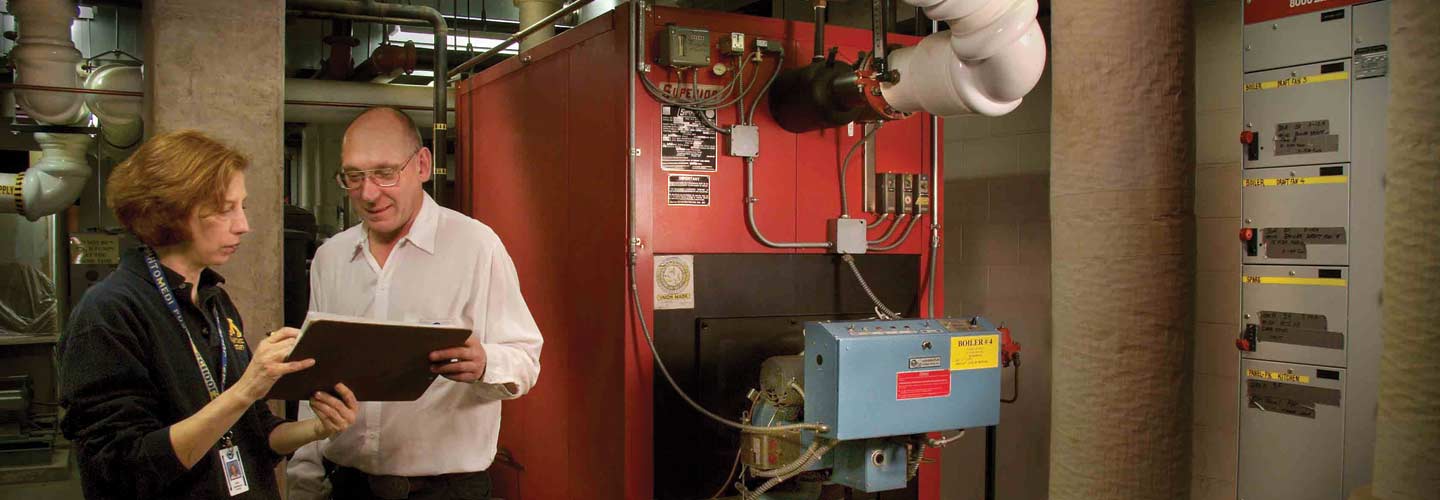Energy efficiency lessons learned
Multiple-choice approach best for schools.

This article appeared in the United States Green Building Council newsletter in April 2019
It’s no surprise that energy efficiency is a pertinent topic for school districts today. According to the EPA, schools that target energy efficiency in their operations and maintenance can typically reduce bills by five to 20 percent.1 And for schools seeking LEED certification, energy efficiency is often a core area of focus for accumulating points. In recent years, the number of K-12 LEED-certified schools has surpassed 2,0002, and that number continues to climb. While interest in energy efficiency is trending up, there's always room for growth. And the key could be in providing school administrators and decision-makers with options so they can consider easier, low-cost energy-efficient improvements for starters, and keep the others on a list for future consideration and budgets.
Economics 101
Energy savings efforts can help alleviate pressing concerns many schools face:
- Tight annual budgets
- Older buildings being used as long as possible
- Buildings with longer operation schedules and more use in the summers
All these factors put the pinch on schools. Although new expenses, even energy-efficient upgrades, can be challenging to sell, understanding long-term energy savings can help ease the project price sticker shock, and long-term savings can be leveraged against future budgets.
Lead with lighting
A good teacher will tell you to start with the easiest subject first. And a holistic lighting strategy is that starting point.
Lighting can be the simplest way to minimize energy consumption without significant expense. Turning off lights in unoccupied rooms can save 8 percent to 20 percent on lighting energy.4 Reminder stickers, and awareness campaigns can help create those savings.
Lighting controls are a low-cost way for schools to maximize lighting-efficiency. These automation improvements can focus on specific areas of the building:
- Occupancy sensors are ideal for areas used occasionally, like storage, faculty rooms or even restrooms
- For hallways, large gyms, cafeterias, and theaters, a combination of scheduled lighting and dimming plus occupancy sensor controls for after-hours help save energy
- Photo-sensor controls can be used for areas with daylighting potential. Networked lighting controls can also be considered.
Next level: LED lighting
The clear benefits of significant efficiency, substantial savings and a short timeline to get a return on investment make LED lighting a strong option to start an energy efficiency journey. And LEDs deliver the proof-points of less energy use, flexible lighting options, and fixture longevity which can lead to lower maintenance costs. Also, lighting improvements can provide less glare which helps benefit student performance by reducing eye strain.
Smarter Heating
Water and space heating3 are the most significant budget category for most schools, comprising as much as 73 percent of natural gas costs. While high-efficiency boilers, furnaces, and water heaters are the best way to go to improve energy savings, it's often just not in the budget.
But there are other options too. Smaller enhancements for current systems include adding electronically commutated motors (ECM) to furnaces to reduce energy use while delivering a constant flow. Regular boiler tune-ups and servicing along with repairing or replacing broken steam traps can also keep aging equipment operating with the best possible efficiency.
Other maintenance projects can include fixing leaky cabinet panels on rooftop air conditioning units (RTU), cleaning condenser coils and checking for any air flow issues and adding pipe insulation. These little efforts add up.
Other big picture items
An excellent way to get a broad understanding of all the energy-saving opportunities available at your school is to get a recommissioning study or a whole-building energy assessment conducted. These types of services can provide you with a complete listing of systems to tune up or upgrade and will often include potential energy cost savings. From there, you can prioritize projects based on yearly budgets.
And, if you’re planning a new renovation or construction project, using energy modeling services can also ensure that your facility is built as efficiently as possible. Incorporating energy-saving strategies into your building designs can create long-term savings, reduce your carbon footprint and increase the return on investment. New construction projects often offer the most cost-effective opportunities to maximize the potential of your energy efficiency savings.
Plan your plan
As you’re planning any energy-saving improvement projects, it’s always best to check in with your local utility. They may have rebates and services available which could help reduce the cost of your project and help you achieve your energy efficiency goals. If your projects are in Xcel Energy’s service territory visit xcelenergy.com or contact the company’s energy efficiency specialists at 855-839-8862.


